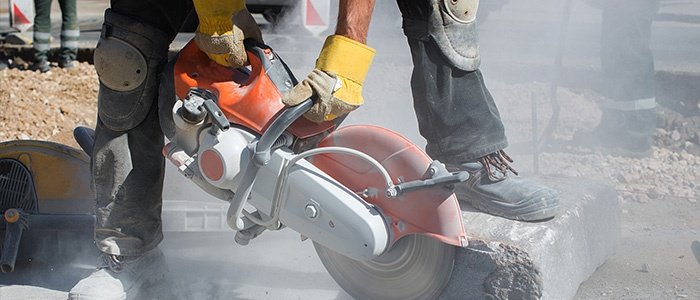By Forrest Richardson, CSP, ARME
Director of Safety, Fit For Work
OSHA regulations are changing all the time – especially in the COVID-19 era. Here are some potential upcoming changes to be aware of to ensure compliance and to maximize the health and safety of your workforce in 2022 and beyond.
OSHA rulemaking process
First, let’s briefly review the OSHA rulemaking process to better understand the significance of the “Final Rule” stage and why it’s so important for employers.
OSHA’s rulemaking process includes seven stages , and it can take anywhere from five to 13+ years to approve new or revised existing OSHA standards. The most significant stage to be mindful of is the Final Rule stage, as rules at this stage are routinely approved within the timeframes employers must include in their short-term enterprise risk assessments.
Under the Occupational Safety and Health Act of 1970, 29 USC 651, OSHA has the authority to enforce safety and health standards promulgated in accordance with the Act. Section 6(b) provides a specific rulemaking process that OSHA must follow when a standard is promulgated, modified, or revoked.
Regulatory Activity Notice: OSHA to increase inspections at trenching, excavation sites
https://www.osha.gov/sites/default/files/enforcement/directives/CPL-02-00-161_0.pdf
A rise in trench-related fatalities has prompted OSHA to announce enhanced enforcement initiatives. In keeping with its National Emphasis Program (NEP), OSHA compliance officers will perform more than 1,000 trench inspections nationwide where they may stop by, and inspect, any excavation site during their daily duties.
OSHA says enforcement staff will consider every available tool at the agency’s disposal. These actions will place additional emphasis on how agency officials evaluate penalties for trenching and excavation related incidents, including criminal referrals for federal or state prosecution to hold employers and others accountable when their actions or inactions kill workers or put their lives at risk.
In the first six months of this year, 22 workers have died while performing trenching and excavation work, surpassing 15 deaths in all of 2021.
Current Final Rules
Here are a few changes currently in the Final Rule stage that are important to pay attention to going forward in 2022.
COVID ETS
It’s worth mentioning the current Covid Emergency Temporary Standard due to the significance of its impact on both employers and employees. The ETS process allows OSHA to bypass the traditional formal rulemaking process previously mentioned and traditionally required under the OSH Act of 1970 in response to what it determines are significant hazards to employees.
The COVID-19 Vaccination and Testing Emergency Temporary Standard rulemaking , applying to employers with 100 or more employees, is being hotly contested in the courts. On Jan. 13, the Supreme Court issued a stay of the ETS until the Sixth Circuit rules on its merits and until the appeals to the Supreme Court are decided. The ETS will still apply to certain industries, and private employers that have implemented COVID-19 policies based on the ETS, that were in the process of doing so, or that want to implement a COVID-19-related workplace policy, may do so, but they should assess these policies in the context of applicable state and local laws and revise them accordingly.
UPDATE
In January, OSHA withdrew the vaccination and testing emergency temporary standard issued on Nov. 5, 2021, which was designed to protect unvaccinated employees of large employers with 100 or more employees from workplace exposure to coronavirus. The withdrawal went into effect on January 26, 2022.
Although OSHA withdrew the vaccination and testing ETS as an enforceable emergency temporary standard, the agency is not withdrawing the ETS as a proposed rule (see the “7 Stages of Rulemaking” link here ). The agency is prioritizing its resources to focus on finalizing a permanent COVID-19 Healthcare Standard.
However, it is important to note that this change is in the stakeholder meeting phase of OSHA’s rulemaking process and will likely take years to complete.
Infectious diseases
In April of 2022, OSHA issued a proposed rule on infectious diseases and considered regulatory alternatives for control measures that would effectively protect employees from infectious disease exposures to pathogens with significant potential to cause disease. The agency identified several workplaces where relevant control measures might be necessary, including healthcare, emergency response, prisons, drug treatment centers, homeless shelters, and other occupational settings where employees may have a higher risk of exposure.
UPDATE
Just as with the vaccination and testing emergency standard mentioned above, OSHA is also trying to establish a comprehensive standard that would encompass COVID-related concerns. This is also in stage one and has a long way to go before taking effect. Read more about the update here: https://www.bdlaw.com/publications/whats-next-for-osha-rulemaking-on-covid-19-and-other-infectious-diseases/
Walking working surfaces rule
With a few exceptions, this rule applies to all businesses in general industry. Many businesses routinely invest in stairs, catwalks, and other working surface improvements to comply with OSHA requirements or to improve access to production areas. In July 2021, OSHA completed the comment period from stakeholders indicating that several regulatory provisions of the 2016 Final Rule on Walking-Working Surfaces (81 FR 82494) are unclear.
In October of 2022, the agency plans to correct a formatting error in Table D-2 1910.28(b)(11)(ii) requiring each flight of stairs with at least three treads and at least four risers to be equipped with stair rail systems and handrails that meet the table requirements. Additionally, OSHA plans to revise the language of the requirements for stair rail systems to make them clearer and to reflect OSHA’s original intent.
National Emphasis Programs (NEPs) of special note
National Emphasis Programs (NEPs) are temporary programs that focus OSHA’s resources on particular hazards and high-hazard industries. Existing and potential NEPs are evaluated using inspection data, injury and illness data, National Institute for Occupational Safety and Health (NIOSH) reports, peer-reviewed literature, analyses of inspection findings, and other available sources.
For our purposes, we will focus on the top three NEPs that apply to most workplaces and that could have the biggest impact in 2022. The complete list of OSHA NEPs can be found on their Enforcement Page.
Hazardous Machinery (machine guarding and lockout/tagout)
Employer machine guarding and lockout/tagout program effectiveness will be particular areas of inspection under this NEP. This instruction provides updated guidance to the OSHA National, Regional, and Area Offices for continued implementation of its NEP to identify and reduce or eliminate amputation hazards in manufacturing industries.
OSHA’s enforcement history shows that employees are often injured when machinery or equipment is not properly guarded or maintained. This NEP targets industrial and manufacturing workplaces with machinery and equipment that could potentially cause amputations.
OSHA Instruction: CPL 03-00-022 – National Emphasis Program on Amputations in Manufacturing Industries – 12/10/2019 – PDF
UPDATE
In 2021, lack of machine safeguarding made the top 10 list of most frequently cited safety violations with a total of 1,313 violations.
No. 10: Machine Guarding, Standard: 1910.212, Citations in 2021: 1,281, Fines in 2021: $10.7 million
Thus far in 2022, lack of machine safeguarding currently ranks 9 th on OSHA’s top 10 list.
There are several practical steps employers can take to help prevent the direct and indirect costs of machine guarding injuries, including:
- Knowing what to inspect (hazard identification and assessment) – Any machine part, function, or process that may cause injury must be safeguarded. When the operation of a machine or accidental contact with it can injure the operator or others in the vicinity, the hazards must be either controlled or eliminated. This includes the point of operation, power transmission apparatus, and other moving parts.
- Knowing how to fix it (hazard prevention and controls) – Fixed, interlocked, adjustable, and self-adjusting guards.
- Training – Safety training is necessary for new operators and maintenance or setup personnel, when any new or altered safeguards are put in service, or when workers are assigned to a new machine or operation.
Process Safety Management (of highly hazardous chemicals)
This NEP aims to reduce or eliminate workplace hazards associated with the catastrophic release of highly hazardous chemicals at facilities, including petroleum refineries, covered by OSHA’s Process Safety Management of Highly Hazardous Chemicals (PSM) standard, 29 CFR 1910.119. OSHA’s standard establishes a comprehensive management program that integrates technologies, procedures, and management practices for hazardous chemical amounts at or greater than the threshold quantities listed in 29 CFR 1910.119.
OSHA Instruction: CPL 03-00-021 – PSM Covered Chemical Facilities National Emphasis Program – 01/17/2017 – PDF
UPDATE
NAICS Code: 31 Manufacturing (part 1 of 3) Standards Cited for NAICS Code: 31 | Occupational Safety and Health Administration (osha.gov)
Establishment size: All sizes
Listed below are the standards cited by Federal OSHA for the 31 NAICS code for establishments of all sizes issued during the period of October 2020 through September 2021. Penalties shown reflect current amounts rather than initial amounts. For more information, please see the definitions here.
NAICS Code: 32 Manufacturing (part 2 of 3)
Establishment size: All sizes
NAICS for “32” 321113 – Sawmills. This U.S. industry comprises establishments primarily engaged in sawing dimension lumber, boards, beams, timbers, poles, ties, shingles, shakes, siding, and wood chips from logs or bolts.
NAICS Code: 33 Manufacturing (part 3 of 3)
Establishment size: All sizes
The manufacturing sector consists of these subsectors: https://www.bls.gov/iag/tgs/iag31-33.htm
- Food Manufacturing: NAICS 311
- Beverage and Tobacco Product Manufacturing: NAICS 312
- Textile Mills: NAICS 313
- Textile Product Mills: NAICS 314
- Apparel Manufacturing: NAICS 315
- Leather and Allied Product Manufacturing: NAICS 316
- Wood Product Manufacturing: NAICS 321
- Paper Manufacturing: NAICS 322
- Printing and Related Support Activities: NAICS 323
- Petroleum and Coal Products Manufacturing: NAICS 324
- Chemical Manufacturing: NAICS 325
- Plastics and Rubber Products Manufacturing: NAICS 326
- Nonmetallic Mineral Product Manufacturing: NAICS 327
- Primary Metal Manufacturing: NAICS 331
- Fabricated Metal Product Manufacturing: NAICS 332
- Machinery Manufacturing: NAICS 333
- Computer and Electronic Product Manufacturing: NAICS 334
- Electrical Equipment, Appliance, and Component Manufacturing: NAICS 335
- Transportation Equipment Manufacturing: NAICS 336
- Furniture and Related Product Manufacturing: NAICS 337
- Miscellaneous Manufacturing: NAICS 339
Combustible Dust
This NEP contains policies and procedures for inspecting workplaces that create or handle combustible dusts. In some circumstances, these dusts may cause a deflagration, other fires, or an explosion. Combustible dusts are often either organic or metal dusts that are finely ground into very small particles, fibers, fines, chips, chunks, flakes, or a small mixture of these.
Types of dusts include, but are not limited to: metal dust, such as aluminum and magnesium; wood dust; plastic dust; biosolids; organic dust, such as sugar, paper, soap, and dried blood; and dusts from certain textiles. Industries that handle combustible dusts include agriculture, chemicals, textiles, forest and furniture products, wastewater treatment, metal processing, paper products, pharmaceuticals, and recycling operations (metal, paper, and plastic).
OSHA Instruction: CPL 03-00-008 – Combustible Dust National Emphasis Program (Reissued) – 03/11/2008 – PDF
UPDATE
Here is a helpful resource for standards in general industry where combustible dust may come into play: https://www.osha.gov/combustible-dust/standards
Notice of Proposed Rule Makings (NPRMs) to keep on your radar
Recently, in December of 2021, OSHA issued a proposed rule to restore provisions of the Obama administration’s 2016 Improve Tracking of Workplace Injuries and Illnesses Final Rule . OSHA proposes to amend its recordkeeping regulation to restore the requirement to electronically submit information from both the OSHA Form 300 and OSHA Form 301 for establishments with 250 or more employees. Under the current version of the regulation, these establishments must only electronically submit information from the OSHA Form 300A, commonly referred to as the “OSHA Log.”
UPDATE
This seems to be still in stage one of the rulemaking process for now. Employers can reference the current requirements listed on OSHA’s recordkeeping page here: https://www.osha.gov/recordkeeping
Heat Injury & Illness Prevention
The public comment period on the ANPRM was extended until Jan. 26, 2022 . Further, the agenda includes an advance notice of proposed rulemaking on heat injury and illness prevention in indoor and outdoor settings, which provides an overview of the problem of heat stress in the workplace and measures that have been taken to prevent it. The ANPRM seeks information on issues that OSHA can consider in developing the standard, including the scope of the standard and the types of controls that might be required.
UPDATE
This proposed change is also still in stage one of the rulemaking process. For more information, here is OSHA’s webpage on the subject , and here is an article from SHRM from with ideas for employers .
Crystalline silica
Also on OSHA’s National Emphasis Program list coming up in August of 2022, OSHA is expected to issue a proposed rule on occupational exposure to crystalline silica to determine if revisions to Table 1 in the standard for construction may be appropriate. Millions of U.S. workers are exposed to respirable crystalline silica or silica dust in many industries, including construction, mining, oil and gas extraction, stone countertop fabrication, foundries, and other manufacturing settings.
Silica dust is made up of small particles that become airborne during sanding, grinding, cutting, drilling and other tasks. These materials typically include sand, stone, concrete, brick, and mortar. Occupationally exposed workers may contract the irreversible lung disease known as silicosis. Long-term exposure to silica dust can also cause other diseases, including cancer.
Several rules were expected to be issued in November of 2021, but currently, there has been no further action. These include:
- A proposed rule clarifying the requirements for the fit of personal protective equipment in construction.
- A proposed rule to update its powered industrial trucks design standard, as well as to collect information to evaluate the need to update requirements related to the maintenance and use of powered industrial trucks and training of operators.
Ace your next OSHA inspection with help from Fit For Work
If your business is in need of a safety compliance easy button, Fit For Work can help. We partner with organizations like yours all across the country to find the gaps, get you to compliance, and make sure you stay there. Whether you’re in need of an Ergonomic Risk Assessment, a Physical Demands Analysis, or expert-led OSHA training, we have the resources and expertise needed to lead you through the process from start to finish.
Contact us today to begin identifying and mitigating hazards to ensure your business is more than ready for your next inspection.





